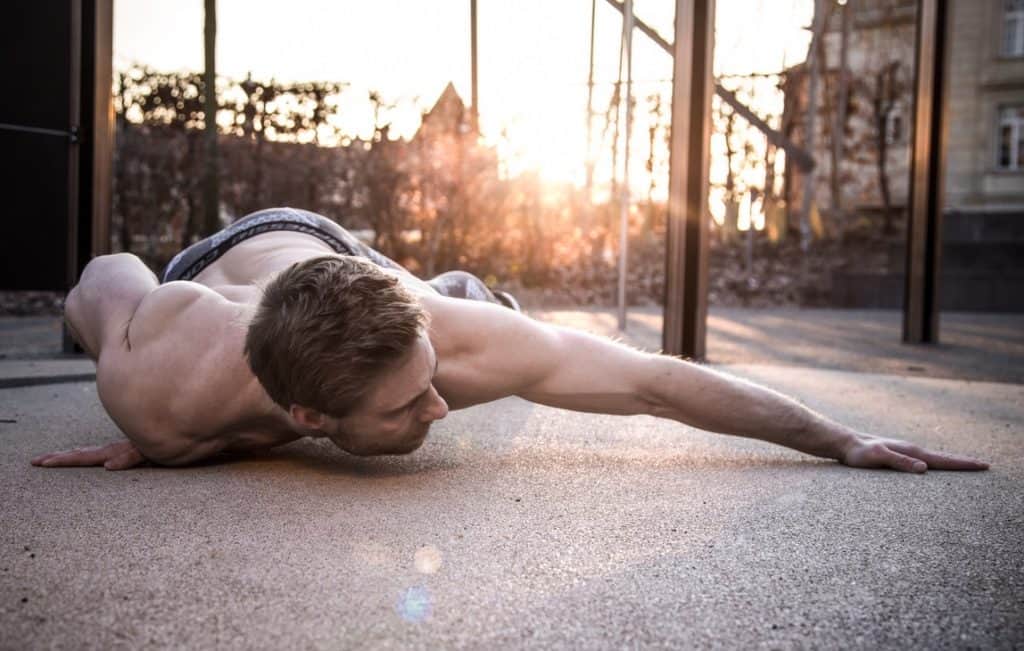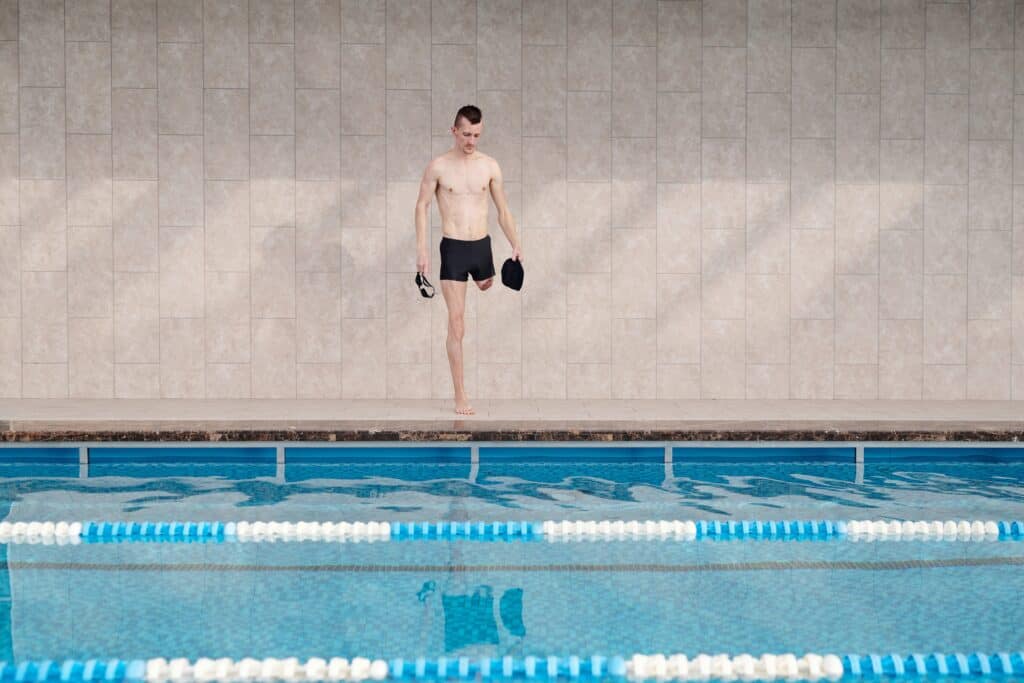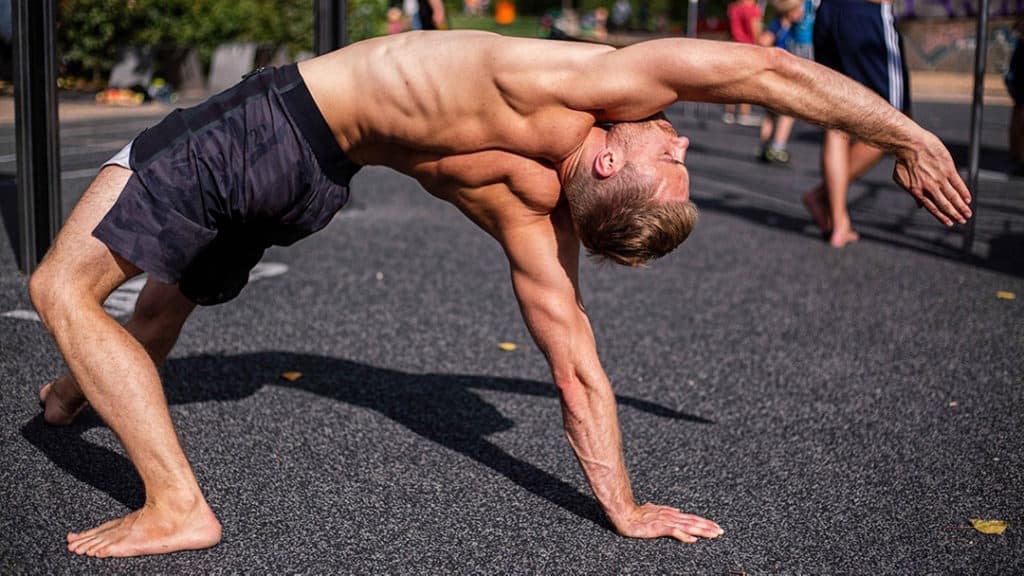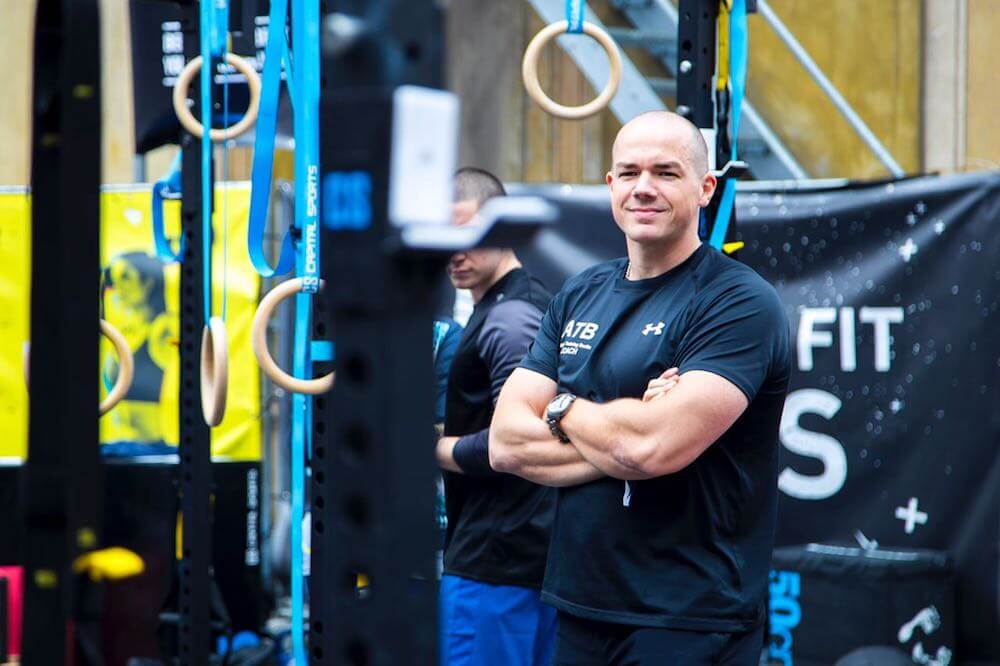Three sets of ten repetitions or 30 minutes of cardio? Workouts like these get boring quickly and might leave us feeling unstimulated.
That’s because our bodies quickly get used to the same workout, which makes it hard to improve performance. That’s why it’s important to diversify your strength and endurance training as much as possible and try out new training principles from time to time.
HIIT (High Intensity Interval Training) and circuit training are both good ways to mix it up – but do you know the subtleties that set them apart? We spoke to David Flacke, personal trainer, medical fitness coach and owner of Krafthaus Köln, to find out the key differences between the two.

David founded Krafthaus in January 2015. The studio specializes in personal and small group training as well as athletic support and workplace health promotion – all in a professional, welcoming atmosphere.
What is HIIT?
“HIIT training originally comes from endurance sports and is characterised by strength and endurance body weight exercises,” David says. “The basic idea of HIIT is to alternately train large muscle groups in relatively short load phases with the highest possible intensity at maximum heart rate. This is followed by a recovery phase.”

The key feature of HIIT is that the exercises are completed as many times as possible in a given period of time.
What are the advantages of HIIT?
- HIIT is time-efficient
“Within a short period of time, you effectively and efficiently train entire muscle groups,” says David, which makes HIIT a quick and compact workout for those short on time as most sessions are complete in under 30 minutes.
- HIIT increases endurance
“By alternating between intense load and active recovery phases, your body is taken out of its comfort zone,” explains David. The maximum oxygen uptake capacity increases and leads to improved processing of oxygen under stress, which boosts your metabolism.
- HIIT is ideal for building muscle
“Since you intensively work large muscle groups in short training phases at a high pace, you can truly build muscle with HIIT,” David says. Exercises should be performed in a controlled and concentrated manner to protect tendons and ligaments from injury and build muscle effectively.
- HIIT boosts fat burning
Our bodies burn calories long after the workout has concluded, which turns you into a fat-burning machine. “The after burn effect of an intense HIIT session can last for some time afterwards,” says David.
Who is HIIT suitable for?
HIIT is perfect for professionals with busy schedules, parents, shift workers, and anyone who struggles to fit in longer workouts.
Because of its high intensity and high frequency, HIIT is not necessarily suitable for beginners, says David Flacke. The training method is aimed more at fitness athletes who have a certain basic fitness level which will ensure they won’t overload their cardiovascular system and avoid sports injuries.
What is circuit training?
Circuit training, sometimes known as circle training or sequence training, might conjure up images of musty gyms and sports instructors with whistles – however “a circuit is the ideal way to organize your strength training and also conditioning workouts,” David explains.
In classic circuit training, you complete one station at a time. You’ll complete a set number of repetitions alternated with a rest, and may take a longer break after each round.

Compared to HIIT training, you can train with or without aids such as resistance bands. Classic exercises such as push-ups and squats are popular because they work different muscle groups in the course of the circuit.
What are the advantages of circuit training?
- Tons of variety
“There are countless possibilities with circuit training. You can target just one muscle group, or alternate – everything is possible,” David says.
- Different training goals
Strength, endurance, flexibility and speed can be trained in a targeted manner. Execution should be controlled and steady, but you can decide which training goals you want to achieve and base your load and regeneration phase on this.
David says that with circuit training, it’s not about going to your absolute limits but building up strength, endurance and ultimately burning fat.
Who is circuit training suitable for?
According to David, circuit training is suitable for both beginners and advanced athletes. “Circuit training is highly functional. Meaning, through complex exercises, it strengthens your body as a whole and your natural movement patterns which you need in everyday life.”
HIIT or circuit training – which suits you?
According to David, which training method you choose depends entirely on your training goals, performance level and personal health. The most important thing is to keep pushing your body out of its comfort zone.
Whether with high intensity, with equipment or without – above all sport should be fun, efficient and beneficial in the long term. For this, our expert recommends training virtually in a group and on-site as soon as it’s possible. “The motivation that comes from group training is crucial,” David says. “And if the coach pushes you to your limits, you’ll experience success in a short space of time.”
If you’re ready to take your fitness to the next level, why not test your limits with one of our HIIT and fitness classes? With our live classes, you can efficiently build muscle, improve your endurance and get in shape from the comfort of your living room.








